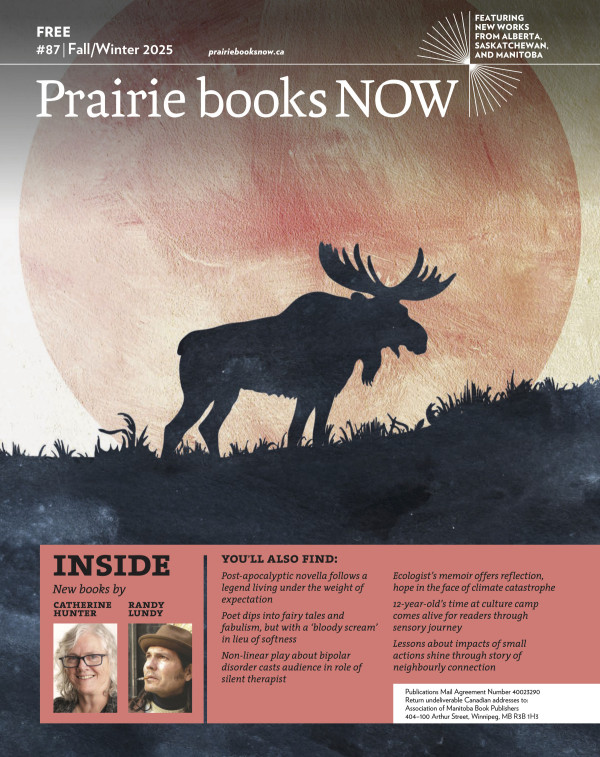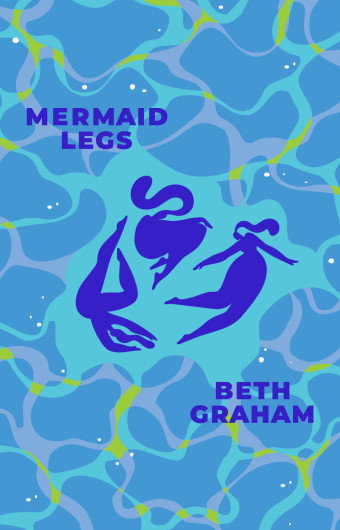“Under the Big Top, all performers assemble. A drum roll. The lights begin to ballyhoo.” And so begins Gabriel Dumont’s Wild West Show, a fantastic, fast-paced theatrical extravaganza that tickles the funny bone while getting to the nitty gritty of Canadian history.

- Gabriel Dumont’s Wild West Show
- Jean Marc Dalpé, Mansel Robinson, Paula-Jean Prudat, Gilles Poulin-Denis, Yvette Nolan, Andrea Menard, Alexis Martin, Laura Lussier, David Granger, Kenneth T. Williams
- Talonbooks
- $24.95 Paperback, 304 pages
- ISBN: 978-17-72013-19-1
Yvette Nolan collaborated with nine other writers and five additional translators to tell the lesser-known story of Gabriel Dumont, a skilled buffalo hunter, polyglot, and Métis resistance leader.
“It started from a place of complete ignorance for Jean Marc [Dalpé] and Alexis [Martin] (two of the other writers) – they were like, ‘Why don’t we know this? Why weren’t we taught this?’ says Nolan.
“Once they had done a lot of learning, they realized a couple of white guys from the east can’t tell this story, so they looked to other writers: Métis writers, Indigenous writers, francophone writers, and writers from this part of the country to tell the story.”
As Nolan points out, the story of Dumont – and the fact that it’s virtually unknown outside of the centre of Canada – is “the story of Canada in a lot of ways.” The story jumps off the pages of this multilingual reversible two-versions-in-one book in English, French, Michif, Lakȟótiyapi (Lakota), Anicinâbemowin (Algonquin), Kanien’kéha (Mohawk), and nēhiyawēwin (Plains Cree).
“It was all about perspectives and what the show was trying to achieve,” she explains. “Alexis and Jean Marc’s sensitivity to the fact that this was not about two founding languages (French and English), but the fact that it was founded on top of Indigenous folks was integral to telling the story. So, it was really important for all the collaborators to have Indigenous languages represented as well as recognizing that the English and French languages were used to colonize Indigenous Peoples.”
“Art can change the world, but also, art can prepare the way.”
As the show tackles the dark underbelly of Canada’s history, it is also steeped in humour and absurdity – like when Don Cherry narrates a play-by-play of the battle at Frog Lake.
“That was wild, and there are so many wild moments in the production,” Nolan says. “You can’t talk about the heaviness without finding a way to mitigate that, right? Reframing it in a satirical way makes the audience see how ridiculous a lot of these things are. People were treated like they were animals – so we can laugh at that, except it’s not actually funny – it’s kind of like a spoonful of sugar helps the medicine go down.”
This spectacular interweaving of different perspectives told through the theatre allows the audience (and readers) to understand what it means to walk in someone else’s shoes. “It’s through art that social development can improve and how empathy is gained,” Nolan explains. “Art can change the world, but also, art can prepare the way.”
While the show is in fact a history lesson, it can also be used as a tool for how we proceed in the coming years.
“I hope this gives people the idea of the future,” says Nolan. “We are responsible for the past. That’s the moment we’re in right now – we are responsible for the past, and that’s what Canadians are waking up and finding out. It’s not just ‘get over it.’ We can’t ‘just get over it’ until we actually start looking at it.”













